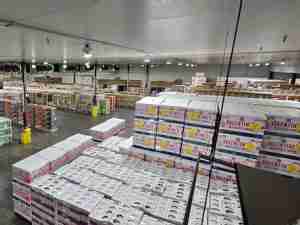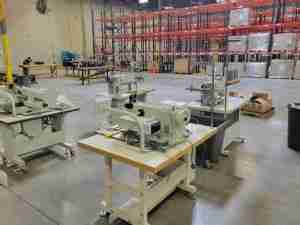'Conventional wisdom in the freight forwarding industry is that there are two strategies for dealing with the twin pressures of shrinking margins and increasing customer demands depending upon the operating model in use,' says Elmowy. 'One model is the operator-centric, or cottage industry model, that works on the assumption that every supply chain job is unique, and that providing personalized service is the optimum route to customer satisfaction. The second model is system-centric, a more scalable system that recognizes that there are 'normal' variations of each job, and that the underlying processes at work are fundamentally the same.'
Elmowy argues that the operator-centric model practiced by most freight forwarders requires independent units to please clients, thereby creating the need for multi-tasking. This cottage industry approach, she says, characteristic of low-volume, high-margin businesses, places vital job details and client preferences in the hands of one person, and is not always the best solution for personalizing customer relations. 'The problem with this business model is that client preferences become the property of a single operator where all job details end up inside the head of one person who handles the account. This creates chaos when that person is unavailable. In addition, the requirement to multi-task means that companies must employ highly skilled, experienced and expensive people to oversee each account, despite the fact that much of their time is spent handling low level, repetitive tasks that others could do.'
The solution, Elmowy says, is the abandonment of the single operator centric/cottage industry business model and the implementation of a standardized freight forwarding model that simultaneously employs a division of labor and creates a control system that can be personalized to each account while delivering better operating results by driving down costs.
'This combined method of operation eliminates the single operator system, expensive multi-tasking and creates instant personalized productivity that occurs whenever people have to switch between tasks,' she says. 'There is also less need to hire multi-skilled people whom end up completing tasks such as data entry, document chasing, faxing and filing. By creating a division of labor, companies can use lower-cost personnel to complete low-level everyday jobs, while employing fewer high-level people to complete the more complex tasks.'
Elmowy suggests five steps that create a personalized, scalable approach to the standard freight forwarding business model through the use of a single control sheet passed from operator-to-operator as a means of personalizing the standard business model:
- Have a salesperson or customer service operator customize a control sheet according to the particulars of a specific job.
- Have the process manager assign the job to the first relevant operator based on the initial task required, with the project sequencing embedded into the control sheet that provides all customer data.
- The task sequence should be followed carefully, with jobs moving from operator to operator, as dictated by the control sheet.
- Have each job signed off by a supervisor at key compliance points.
- Once the job is completed, the control sheet should be passed on to the accounting department for correct billing and invoicing.
'Utilizing a customer control sheet, with appropriated assigned tasks is the key to personalizing a standardized business model,' says Elmowy. 'Remember, good customer service is simply a matter of delivering what you promise ' at the ne









